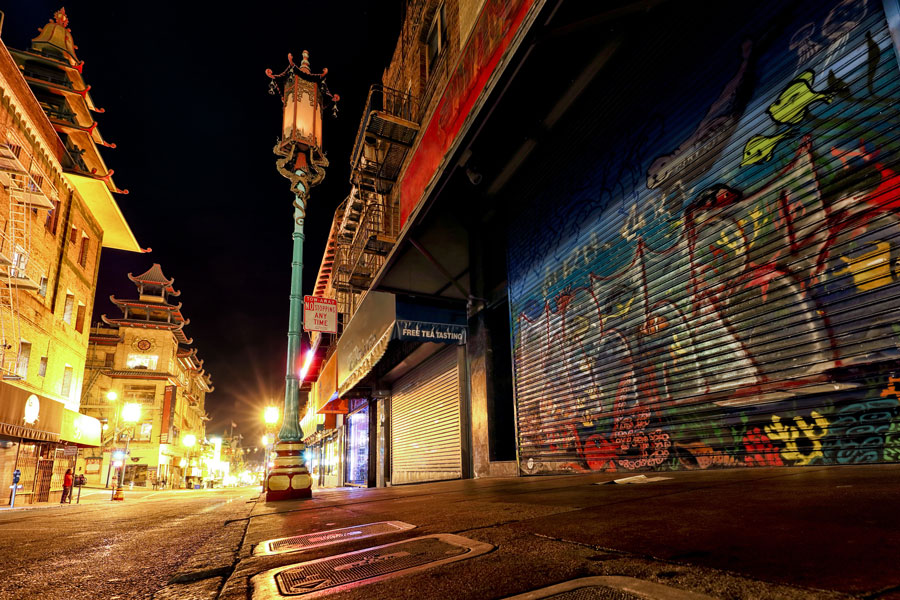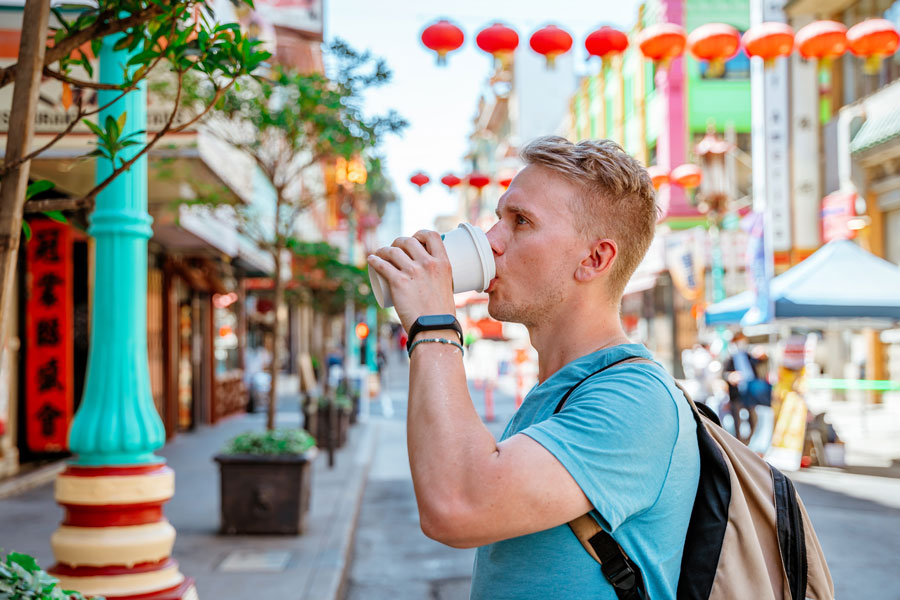
13 Dec 2021 Year in Review for San Francisco’s Chinatown
Like most communities that depend on tourism revenue, the future of San Francisco’s Chinatown looked bleak due to the impact of the coronavirus pandemic. However, the country’s oldest Chinatown has a history of survival despite facing dire circumstances several times since the 1850s. From severe racial discrimination that prevented the area from growing in the early decades to a devastating earthquake and fire in 1906, San Francisco’s Chinatown has faced extreme challenges in the past.
Can Chinatown recover in the wake of a pandemic that shuttered many businesses for good and left people feeling anxious about traveling? Chinatown cannot do without tourism, and merchants have little control over government restrictions and people’s willingness to venture out. But there are signs of optimism as we look ahead to 2022.
Chinatown Merchant & Visitor Concerns in the Spring of 2021
By May of 2021, state and local governments lifted mitigation efforts to the least restrictive levels seen in nearly a year. Although businesses in many neighborhoods of San Francisco saw a quick return of their customer base, the same was not true for Chinatown merchants.
These merchants already experienced a decline in customer traffic before shelter-in-place orders went into effect in the spring of 2020. Much of this was because Chinatown business owners once again had to deal with discrimination. This discrimination occurred due to misguided hostility directed towards people of Asian decent due to the coronavirus’s Chinese origins.
Another reason for reduced revenue was the decline of international travelers, many who live in countries with travel restrictions. Chinese tourism in particular was almost nonexistent in 2020.

Another challenge for Chinatown merchants is that many do not read or speak English. This language barrier prevented them from applying for coronavirus relief loans and other forms of financial help. Many of the resources and information about these resources were not available in their Chinese.
And finally, many Chinatown merchants expressed frustration that the city did not do enough to help revitalize their business. The San Francisco Chinatown Merchant’s Association had to enact several of its own solutions.
One example was shutting down three blocks of Grant Avenue to increase foot traffic to shops and restaurants. While this helped some merchants, local businesses still see nothing close to their pre-pandemic revenues.
Chinatown Merchants Host Summer Street Fair to Promote Racial Unity
Hope for the future of Chinatown at last emerged in the summer of 2021. One example was the Summer Block Party that took place on Pacific Avenue.
More than 100 area residents and several politicians showed up, including London Breed, the mayor of San Francisco. Mayor Breed commented that the event was an excellent way to bring African-American and Asian communities together to build solidarity in these challenging times.
In addition to politicians giving speeches from the center stage, the summer event featured contemporary music from several genres, street dancing, the traditional Chinese lion dance, and other lively events. Chinatown merchants felt encouraged by the turnout and the desire that attendees expressed about getting the city back to normal.
Willie Wong Children’s Park Opens
Then, just a few months ago, CMG Landscape Architecture completed construction on Willie Wong Playground in Chinatown. Locals affectionately refer to the park as Woo Woo.
The new park is a big improvement on the old setup. That park sat in the middle of a city block with access on just one side, a clubhouse, and a connecting alleyway. However, the old park was not easily accessible, and its features geared towards different age groups sat too far apart with 15-foot retaining walls between them.
We made it to the phenomenal @RecParkSF Willie Woo Woo Wong playground renovated by @earthscapeplay and what a beautiful success it is. The dragon is just awesome. #everysfplayground pic.twitter.com/mXHBZ8qYwM
— Mack, yes, That Mack (@that_mc) February 17, 2021
The new park features a colorful bridge that sits above the area. The bridge allows people to easily pass from one area of the 15,000-square foot park to another.
Toddlers can play in the area underneath the bridge, while older children and adults can head to ball courts for some much-needed recreation. The advantage in using roof spaces as part of the park is that it turns the entire structure into an indoor-outdoor community center. Along with the Street Fair, Woo Woo Park has been instrumental in revitalization of the Chinatown neighborhood after COVID-19.
New Subway Station Slated to Open in Chinatown in 2022
After gaining approval for funding back in 2002, a new subway station will finally open in Chinatown in early 2022. The new Rose Pak Station will provide the 10,000 residents of Chinatown (plus hundreds of thousands of visitors) with a fast, convenient, and efficient way to travel in and out of the area. With parking notoriously difficult in Chinatown, efficient mass transit options are critical to the future of the neighborhood.
Central Subway's massive crossover cavern with Chinatown – Rose Pak Station almost finished in the background. Construction wrapping this spring! @sfmta_muni pic.twitter.com/eysHzhEXIn
— phillip pierce (@perpetuallyphil) February 4, 2021
City planners named the new station after Rose Pak. Pak was a community advocate who pushed for the new subway line to help bring more tourists to Chinatown. With better ways to access Chinatown and fewer coronavirus restrictions, the future looks brighter for Chinatown merchants in 2022.







